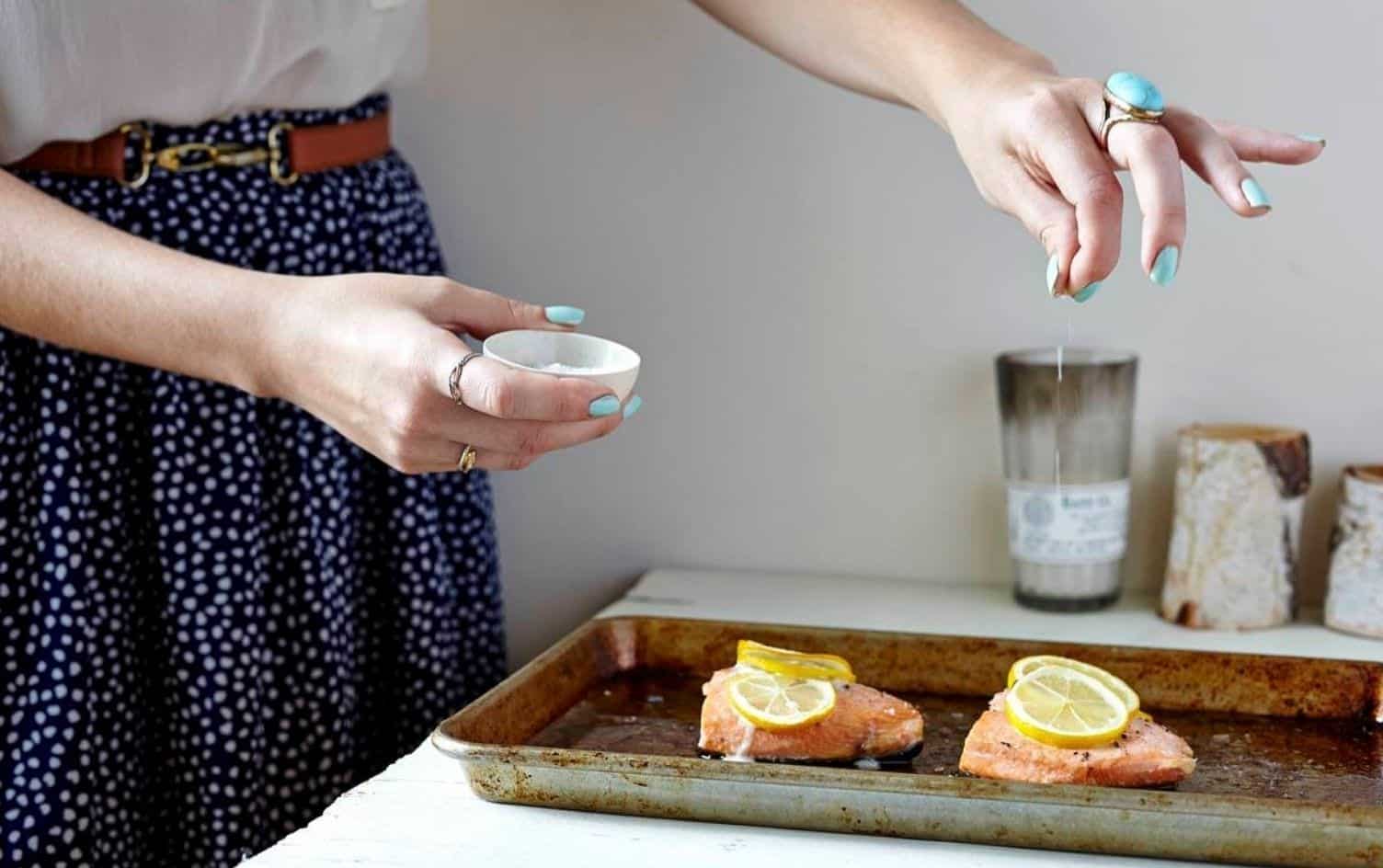Sodium is a key electrolyte necessary to maintain normal cellular function. In particular, sodium plays an important role in regulating fluid balance along with nerve and muscle cell function. It’s consumed through food (typically table salt, a combination of sodium and chloride) and excreted through sweat and urine. However, when sodium levels are significantly elevated, it can be a risk factor for high blood pressure and heart disease. That’s why many doctors and dietitians recommend keeping an eye on sodium intake and reducing excess sodium consumed via overly processed foods that are not nutrient-dense.
HOW MUCH SODIUM IS RECOMMENDED?
The Dietary Guidelines for Americans (DGAs) recommends eating no more than 2,300mg of sodium per day, or roughly 1 teaspoon. However, the average American adult consumes 3,440mg daily — nearly 1.5 times the recommended limit. That’s because sodium is virtually everywhere, even in foods we consider the most nutritious. For example, 100 grams of raw spinach (about 3 cups) contains 79mg and 3.5 ounces of raw chicken breast contains 116mg. That’s before you add any salt or salt-rich condiments. But really, the biggest contributor to Americans’ high sodium intake is processed food. “Roughly 3/4 of the sodium in our diets comes from processed foods,” says Dr. Elliott Antman, a cardiologist and former president of the American Heart Association.
IS THAT LIMIT RIGHT FOR EVERYONE?
While 2,300mg might be a good starting point to aim for, there’s an ongoing debate in the scientific community about how much sodium is actually too much. According to research, most studies examining the association between sodium intake and overall health find that for healthy people, eating less than 2,300 milligrams per day is associated with a lower risk of heart disease and stroke. For people with existing heart conditions or high blood pressure, studies show 1,500mg per day or less is associated with better health outcomes.
HOW ABOUT FOR HEALTHY FOLKS?
In short, this is still a gray area. According to a Centers for Disease Control and Prevention (CDC) report, 89% of American adults eat too much sodium and would benefit from eating less. However, only 1/3 of American adults have high blood pressure, which means not everyone who eats more than the recommended amount of sodium will have health problems as a result. It’s a good idea to speak with your doctor or a registered dietitian to determine your individual needs.
WHY ATHLETES’ NEEDS DIFFER
Another caveat to the 2,300mg recommendation is how often and how intensely you exercise. Athletes likely have higher sodium requirements than non-athletes. “Athletes lose anywhere from 0.3–2.4 liters of fluid per hour as sweat, and that sweat can contain anywhere from 230–1,610 milligrams of sodium per liter,” says Marie Spano, MS, RD.
The amount of sodium you lose when you sweat depends on all kinds of factors, from genetics to how much sodium is in your diet. Still, someone who loses 1.5 liters of sweat during an hour-long workout and could lose anywhere from 350–2,400 milligrams of sodium. If you regularly get cramps or feel dizzy during or after exercise, that might be a sign you need more sodium. If this is the case, Spano recommends drinking an electrolyte beverage containing some sodium during exercise since it’s also important to replace fluids. For most people, regular exercise doesn’t mean you need to add sodium to your diet, but it could mean that the excess sodium you’re already getting is sweat out, which is a good thing, says Spano.
HOW CAN YOU REDUCE SODIUM INTAKE?
Start by tracking your food intake with an app like MyFitnessPal, so you can get a sense of how much sodium you’re currently consuming. Then, one of the best (and easiest) ways to cut back on sodium is to prioritize whole foods and reduce the amount of processed or prepared foods and beverages you consume. Buy fresh or frozen fruits and vegetables over canned when possible, or look for canned items with no-salt added. Opt for more unseasoned meats, fish and plant-based proteins instead of processed animal proteins like bacon, deli meat or canned meat, which are all high in sodium. If you have time, try buying dried beans and making a big batch instead of buying canned beans. When you cook these things at home, try to reduce the amount of salt you use by adding flavor instead with herbs and spices, citrus juice or vinegar.
When you buy packaged or processed foods, look for labels like “low-sodium” or “no-salt added.” It can also be helpful to read nutrition labels or menu nutrition information and opt for choices with 400mg of sodium or less per serving, recommends Kylene Bogden, RD.
Discover hundreds of healthy low-sodium recipes via “Recipe Discovery” in the MyFitnessPal app.




